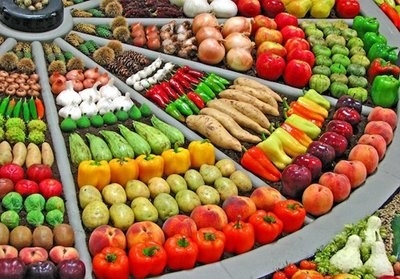China tightens veggie and fruit import requirements for Vietnam
Tuesday, August 20,2019
AsemconnectVietnam - Improving product quality and promoting exports through official channels are seen as a stable method of development for Vietnam's fruit and vegetables as China looks set to apply stricter requirements on fruit imports in the future, according to the Plant Protection Department.
Currently, Vietnam's fruit and vegetable products have established a strong presence in nearly 55 countries, whilst a number of major markets have seen strong growth, including China, Japan, the United States, Russia, Taiwan (China), the Republic of Korea, the Netherlands, Singapore, and Thailand.
Fruit and vegetable exports see plenty of room for growth
During the reviewed period, veggie and fruit exports to foreign markets saw a rise in export turnover in comparison to last year’s corresponding period, mainly in markets such as Indonesia (up 339 per cent), Italy (up 208 per cent), Laos (up 161.8 per cent), and Hong Kong (up 133.3 per cent).
The average growth rate of the fruit and vegetable sector during the 2011-2018 period hit 32.2 per cent, while last year’s exports enjoyed a surge of 8.8 per cent to US$3.8 billion over the previous year’s figure.
China tightens export requirements through official channels
Accordingly, in order to trace the origin of products, China has requested that local fruits be given codes indicating both growing areas and their packaging facilities. These are the two requirements for imported fruits through official channels.
In the future, China is to apply stricter requirements and standards to stand alongside specific conditions and inspections. If the Vietnamese side fails to comply with this standard, China will say no to all certificates and codes granted by Vietnam.
Raw cashew nut imports from Cambodia skyrocketed
Vietnam’s trade with top 11 Asian markets is set to grow significantly
Trade recovers strongly since reopening
Reference exchange rate down 2 VND on March 17
DAILY: Vietnamese pepper prices rose by 500 VND on March 17
DAILY: Vietnamese coffee prices increased by 500 VND on March 17
Vietnam posts 78.9% growth in coffee export value to Spain
9 export items with positive growth in first 2 months of 2023
Seafood exports in February and first 2 months of 2023
Vietnam’s regulatory interest rates to be reduced by 0.5-1 percent
Consumer rights protection online a focus amid e-commerce boom
Opportunities for Vietnamese goods in foreign supermarkets
Reference exchange rate up 3 VND
Rice exports reached more than 893,000 tonnes in 2 months

Plan on implementing Decision No. 327/QD-TTG dated March ...
Concretize viewpoints, objectives, tasks and solutions of the plan in accordance with practical conditions of the locality, associating ...Plan on implementing national environmental protection ...
Implementation plan of marine aquaculture development ...
Program on conservation and development of Vietnamese ...
Plan on improving quality of human resources to 2025 and ...

Efforts taken to turn culinary culture into national ...
The Vietnam Cuisine Culture Association (VCCA) is taking steps to implement a project to build and develop Vietnamese culinary culture ...Vietnamese cuisine making a name for itself with ...
Vietnam advance to next round of AFC U20 Women’s Asian Cup
Cultural tourism and traditional values promoted through ...



